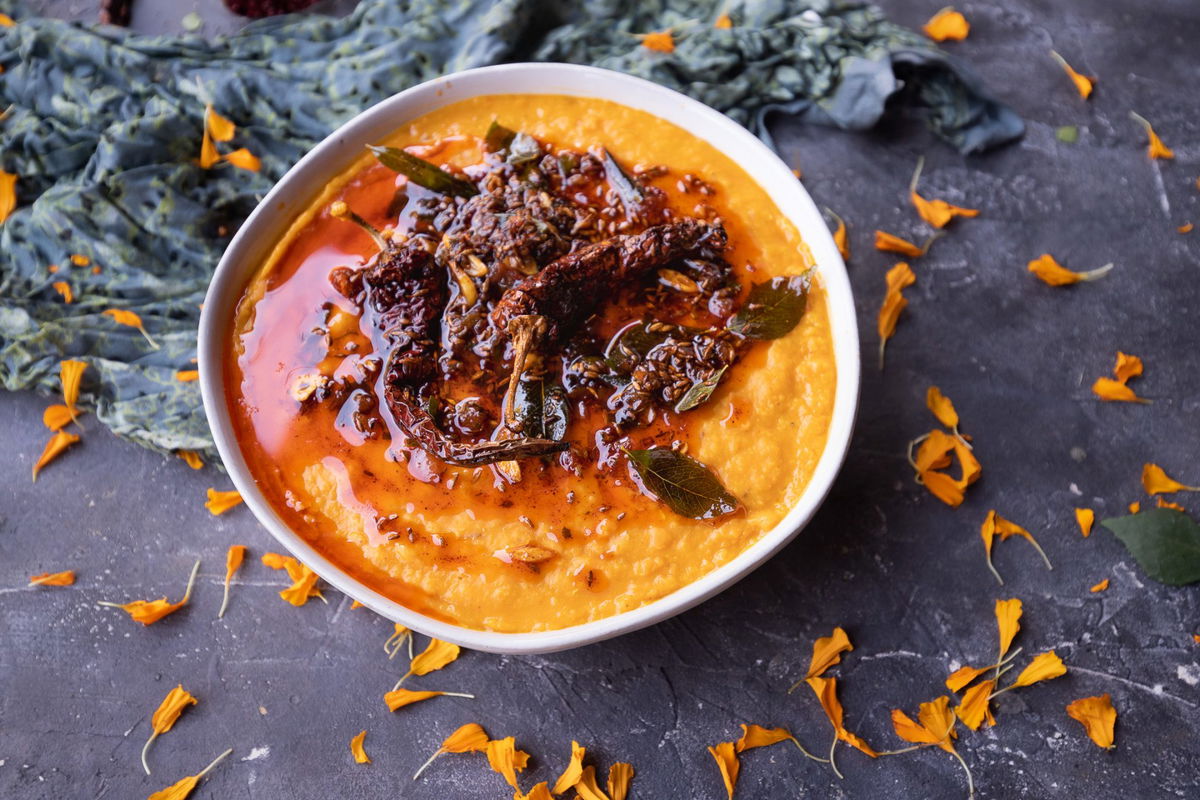Grandma’s Gujarat Dal is the traditional “khatti meethi dal” (sour-sweet dal) served in Gujarati homes. It plays on the traditional Gujarati flavor balance of sweet, sour, and spicy.
About this Recipe
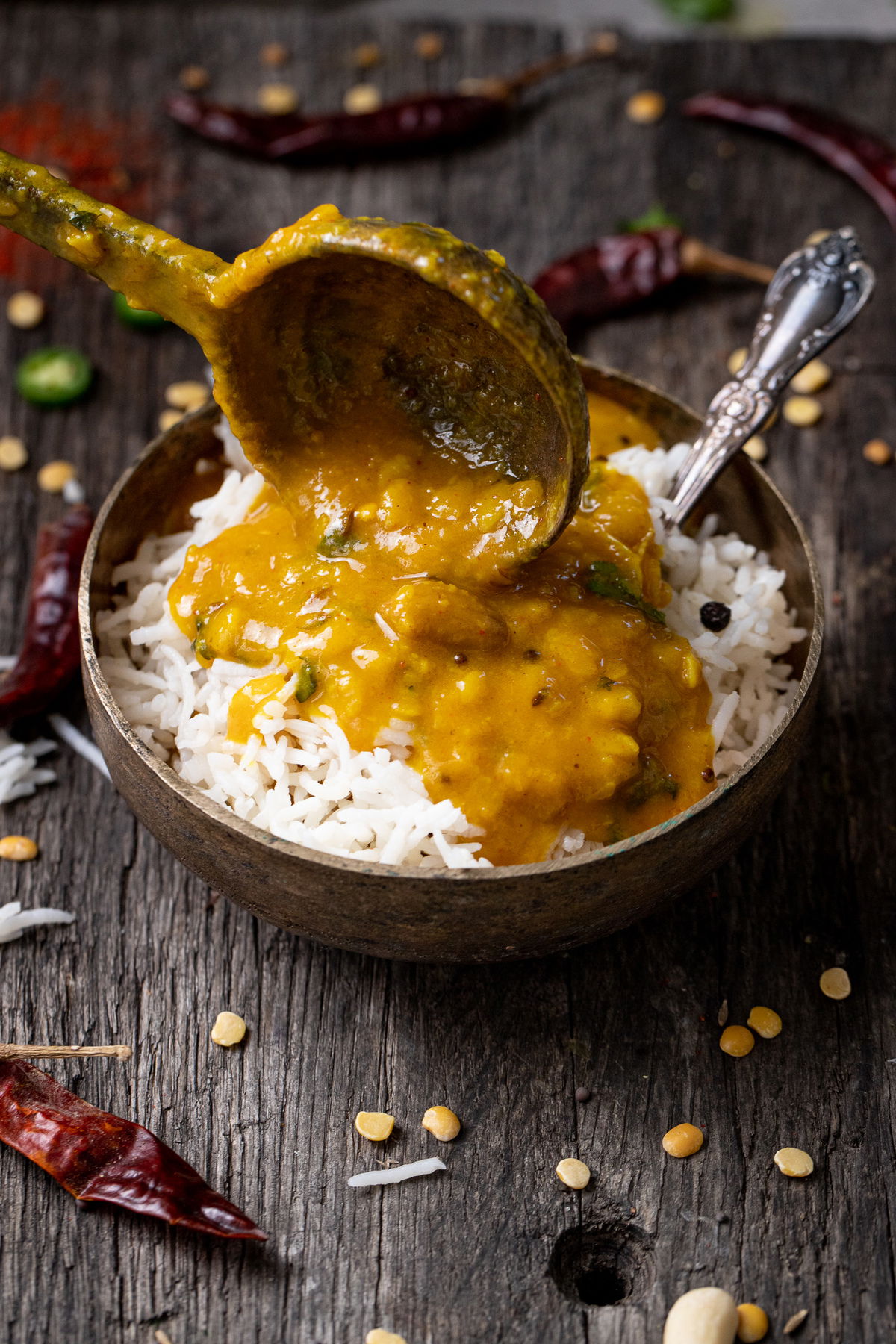
Two things to know about my Grandmother’s kitchen. 1. Her kitchen was always sparkling clean, and 2. there was no experimenting in her kitchen. She liked things a certain way, and that’s exactly how she did them every time.
My Grandmother cooked many things, but there were two dishes she would cook over and over again: this dal and her many eggplant dishes. While my mom and I tend to experiment, often leaving the sugar out of traditional savory dishes, Grandma insisted on the sweet Gujarati style.
In true Indian style, she never measured anything. She did everything by sight and taste. I learned this recipe from watching her cook many times, but I had to figure out the measurements almost from scratch. But it was well worth the effort. I’m so glad I did that because now I can make this dal in her memory and know it is how she would have liked it.
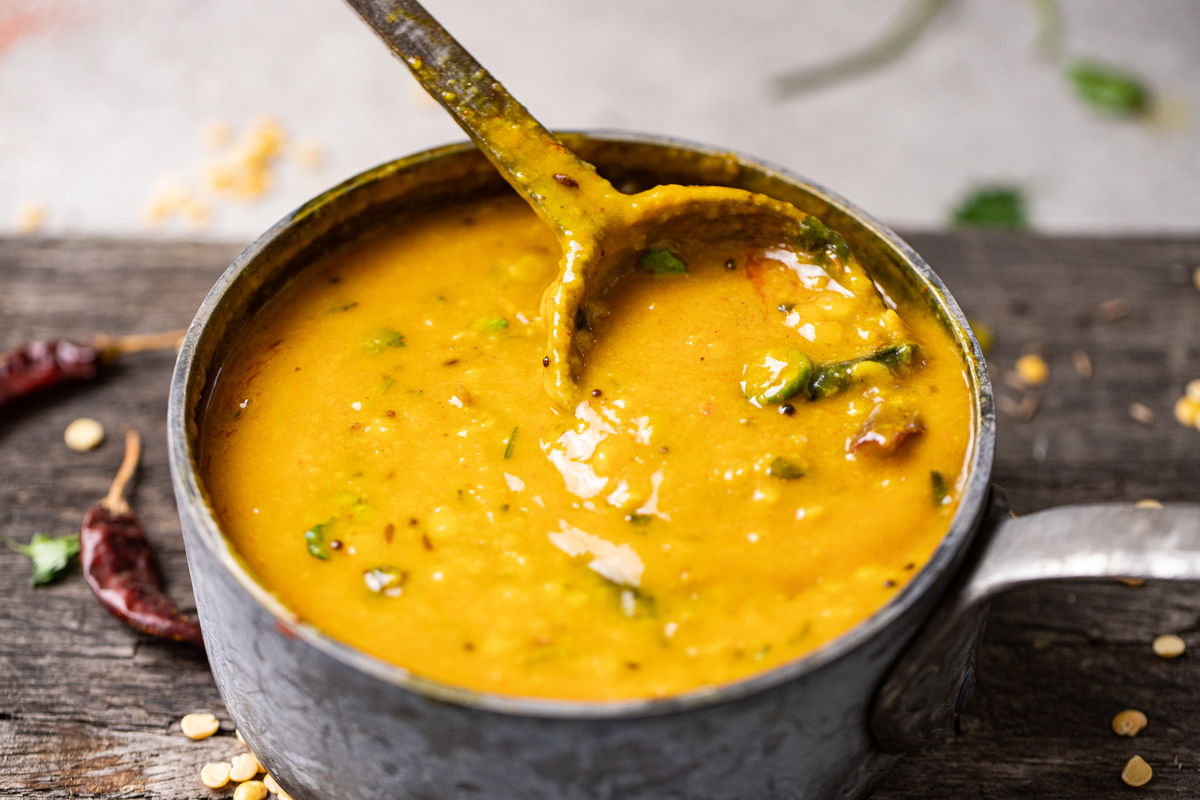
Kokum in Dal
One of the characteristic flavors of Gujarati Dal comes from kokum, which gives it a lovely tanginess. Kokum, a fruit related to mangosteen, is native to Maharashtra and Goa.
The dried kokum fruit is traditionally used as the souring agent in Gujarati dal. It adds a wonderfully bright sour flavor. If you don’t have any, you can use lemon or tamarind as a substitute.
Ingredients
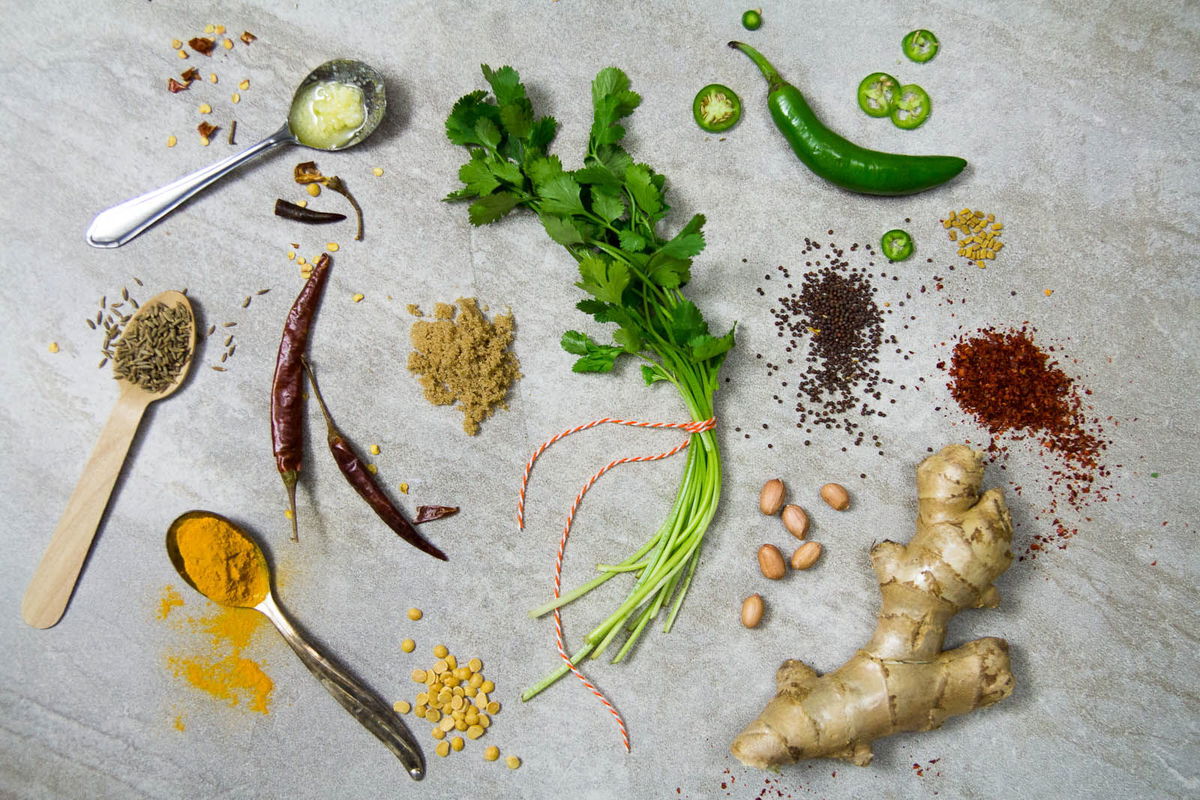
Tuvar (toor) dal – split dried pigeon peas. This is the most popular lentil in Gujarati cuisine.
Kokum – kokum is traditionally used in Gujarati dals for tartness. Tamarind or lemon juice can be used in its place.
Peanuts – whole peanuts are traditional to this dal. They add a nice crunch and texture.
Methi seeds – give a little bitterness that balances with the sugar and spice.
Turmeric – we typically use dried turmeric powder but fresh grated turmeric can be used as well.
Ginger – fresh grated ginger is ideal but use dried ginger power in a pinch.
Mustard Seeds – common in Gujarati vaghar
Cumin Seeds – common in Gujarati vaghar
Chili Powder – add to taste. Usually, the spicier the better!
Cilantro – adds a freshness but can be left out if you are not a fan.
Chilies – I add green chilies to the vaghar, not everyone does, but I like the texture of cooked chilies. This dal is meant to have as much heat as you can handle.
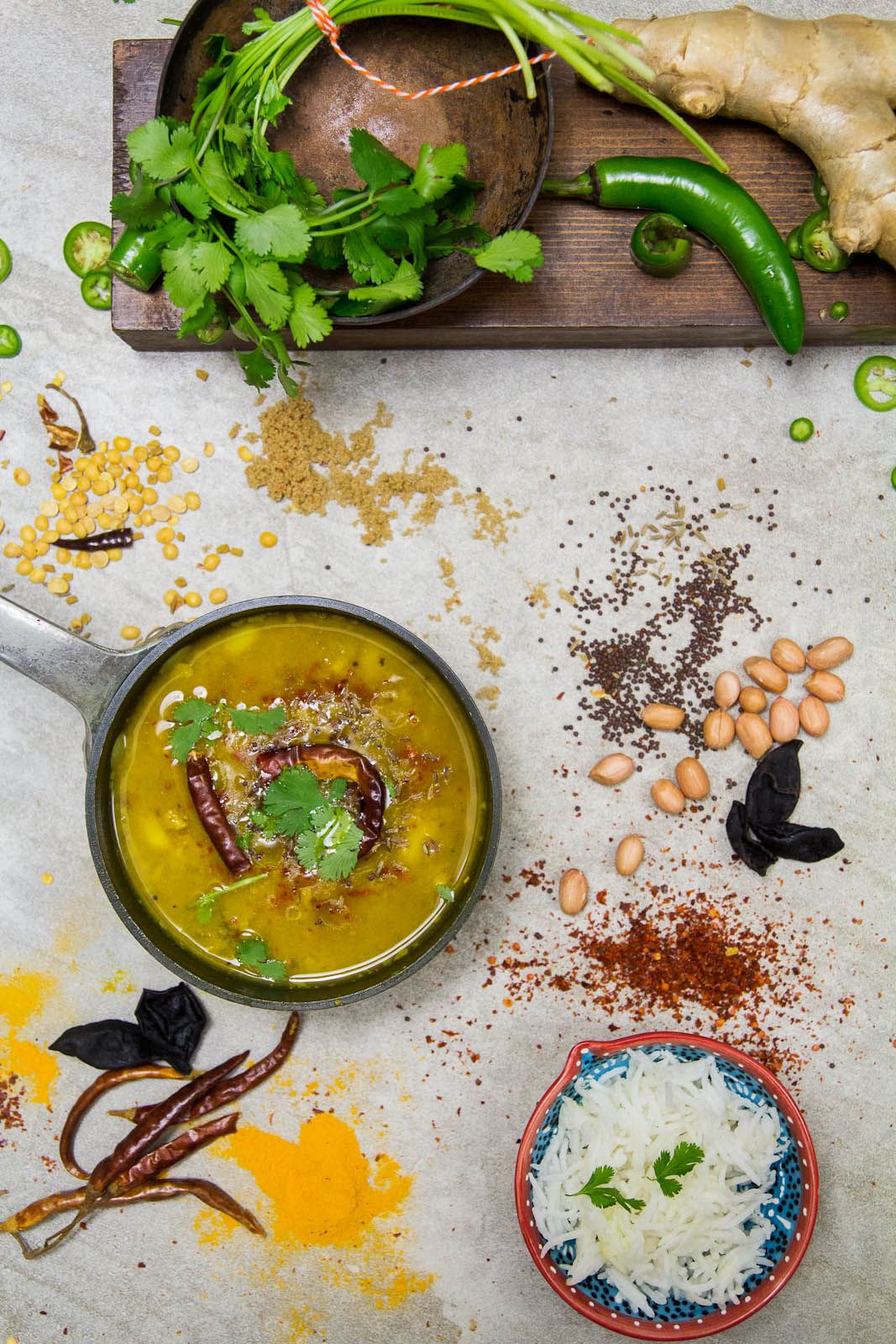
Cooking Methods
This is a great recipe to cook in the Instant Pot or a pressure cooker, as my Grandmother always did. But it can also be cooked on the stovetop in an ordinary pot.
Stovetop Method
In a large pot (I use my Dutch oven), boil the tuvar (pigeon peas) and kokum in 6 cups water for about 30 minutes until the tuvar is soft. This may take longer if your tuvar is old.
Cook until the peas have just softened. Keep an eye on the water level as they are boiling; you will probably need to keep adding water. If the water runs low, add enough so that the water covers the dal but not too much.
Instant Pot Method
The Instant Pot is convenient because you do not have to keep an eye on the water level or stir to prevent burning. It is also a little bit faster. Cook the dal and kokum for 9 minutes in 2 1/2 cups of water, followed by a quick pressure release. Once the dal is cooked, the steps are the same as with the stovetop method and can be completed with the Instant Pot in saute mode.
Cooking Tips
- Rinse the dal, and cook the dal until it’s soft.
- If you cook it on the stovetop, keep an eye on it. You may need to add water as it evaporates so your dal doesn’t burn.
Serving
This is a traditional Gujarati dal. It is often eaten simply with rice, “dal bhat,” or rice, dal, roti, and a shaak (“dal bhat shaak rotli”). To enjoy it how my Grandma loved to serve it, have it with simple basmati rice, phulka roti, and ringan bateta nu shaak (eggplant and potato shaak).
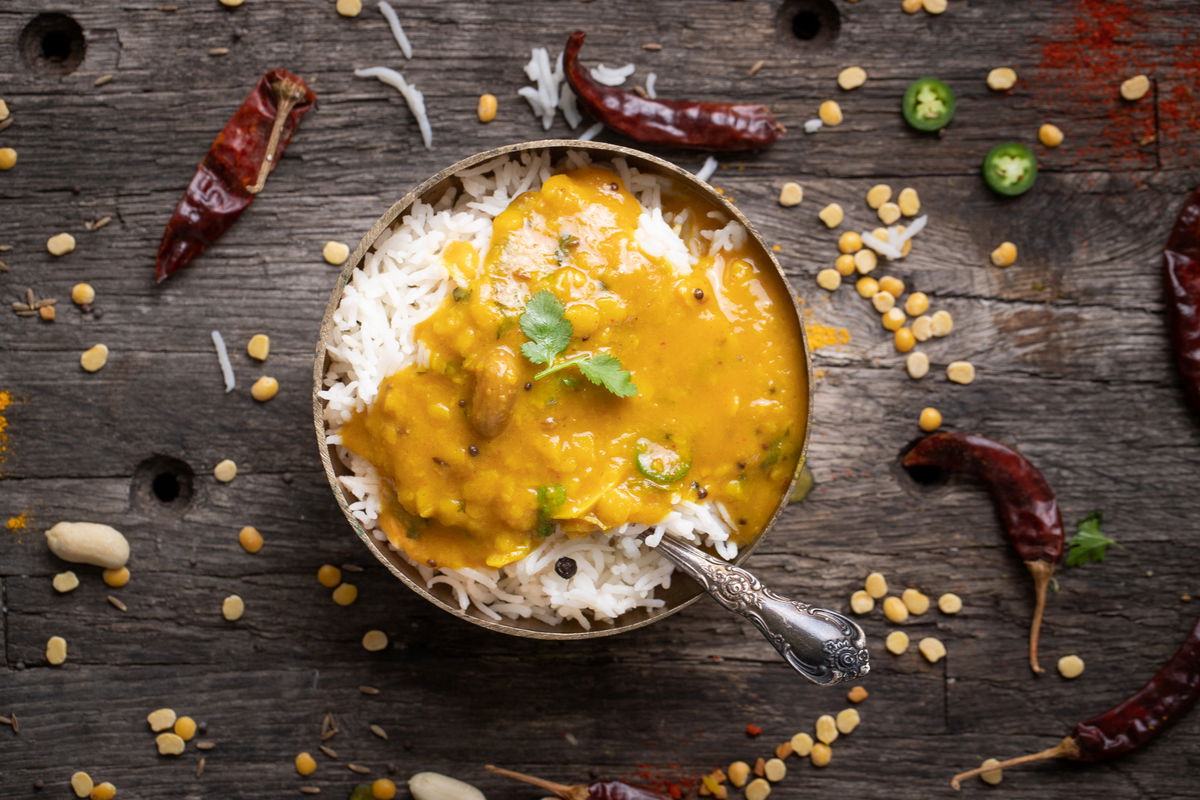
Variations
- More spice: add red chili powder; use cayenne or other red chili powder you choose. Use a spicier green chili such as thai or bird’s eye chili.
- Use brown sugar or white sugar in place of jaggery. This version is high in sugar because my grandmother loved her sugar, you can cut it and use only 1-2 tablespoons if you prefer.
- Instead of peanuts, try cashews.
Refrigerating
Refrigerates well for up to 5 days. Freezes beautifully for up to six months. My aunt would make this in a large batch and freeze it in smaller tubs to use over time.
Originally published on April 14, 2014
Grandma’s Gujarati Dal – Instant Pot and Stovetop Methods
Grandma’s Gujarat Dal is the traditional “khatti meethi dal” (sour-sweet dal) served in Gujarati homes. It plays on the traditional Gujarati flavor balance of sweet, sour, and spicy.
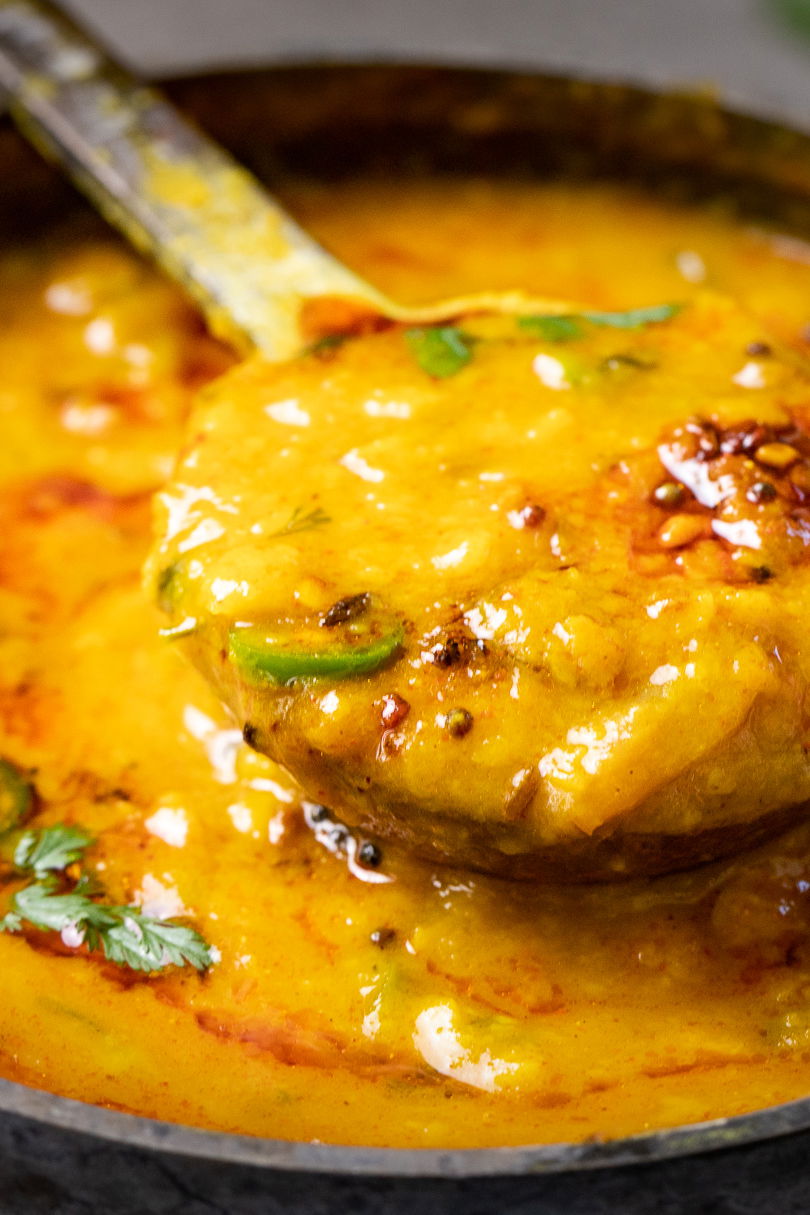
Ingredients
- 1 cup tuvar dal (split pigeon peas/ toor dal)
- 5 kokum (or lemon juice / tamarind)
- 3 tbsp brown sugar or jaggery
- 1 Serrano chili or to taste
- 1 tsp ginger grated
- 3 tbsp peanuts raw
- 2 tbsp ghee (or oil)
- 1/8 tsp hing/ asafoetida
- 1 cinnamon stick
- 1/2 tsp mustard seeds
- 1/2 tsp cumin seeds
- 1/8 tsp fenugreek seeds optional
- 1/2 tsp turmeric powder
- 1/2 tsp chili powder or to taste
- 1 bunch cilantro (chopped)
- 1 tsp salt (or to taste)
Instructions
- Rinse the tuvar in cold water until the water runs clear, about three times.
Instant Pot Instructions
- Cook the tuvar and kokum with 2 1/2 cups water for 9 minutes under high pressure. Lift the whistle for a quick release when the tuvar has finished cooking.
- Set the Instant Pot to saute mode and continue with the “For Both Methods” steps.
Stovetop Instructions
- In a large pot (I use my Dutch oven), boil the pigeon peas and kokum in 6 cups water for about 30 minutes, until the peas are soft. Keep an eye on the water level. If the water runs low, just add enough so that the water covers the dal but not too much.
For Both Methods
- Once the dal is cooked, add 3 cups of water, jaggery, green chili, ginger, peanuts and salt. Bring to a boil.
- While the dal is boiling, work on the vaghar. In a small saucepan, heat the 2 tablespoons of ghee or oil. When the oil starts to shimmer, add the mustard seeds, let them pop for a couple of seconds, then add cumin seeds. Let those go for a couple of seconds, then add asafetida, asafoetid cinnamon, and fenugreek seeds. Let cook for about 10 seconds. There should be a lot of sizzling and popping.
- Optionally, add 2 dried red chilies and the green chili. Then add the turmeric and chili powder to the hot oil, stir and immediately pour into the lentils
- Add the green chilies if you did not use them in the vaghar. Let the lentils continue to boil for at least 15 minutes. You can boil for up to 45 minutes. Add water if you boil longer to keep the water level just above the lentils.
- Turn off heat. Stir in the cilantro. Serve warm with rice.
Notes:
Kokum is available at Indian stores, but if you don’t have it, you can substitute lemon juice, tamarind or even tomatoes. If using lemon juice, add 2 tbsp of lemon juice at the end after you’ve turned off the heat. If using tamarind, soak a 1 inch sized ball in 1/4 cup of warm water for about 20 minutes. Add this water to the dal after the dal with the ginger and green chilies.
You can also use tomatoes, but try to use some that are tart (as opposed to sweet ones like Roma). Add about 1/2 cup of chopped tomatoes to the dal when you add the ginger and green chilies.
